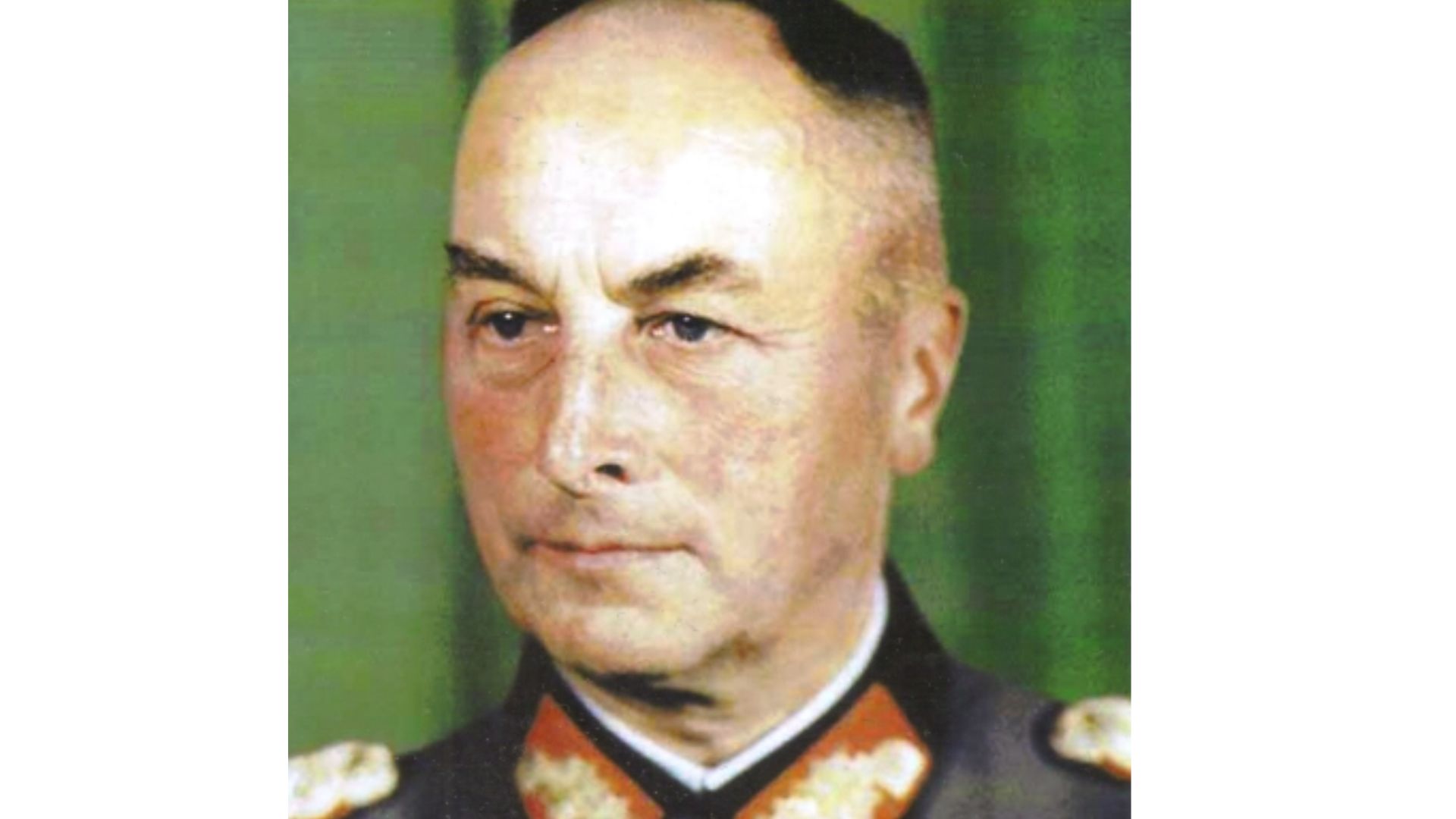
Fritz-Hubert Gräser (born November 3, 1888 in Frankfurt (Oder), - October 4, 1960 in Göttingen) was a German officer, General of Panzer troops, and last commander of the 4th Panzer Army in the Second World War.
Fritz-Hubert Gräser Life
Gräser occurred on 28 February 1907 from the Corps of Cadets. Came as an ensign in the Grenadier Regiment “Prince Carl of Prussia” (2nd Brandenburg) # 12 in his hometown and was there on the 27th January 1908, promoted to lieutenant. From 1 November 1912, it was used as an aide and came after the outbreak of the First World War with the regiment on the Western Front for use. This took place on 8 November 1914. He was promoted to first lieutenant, and as such, he served as regimental adjutant from June 20, 1915.
Gräser took over on 16 September 1915 as the leader of the 9 Company of his regiment. During a battle on 29 September, he was severely wounded by a headshot and spent the following years in the hospital. After his recovery, he was to his commanding general staff training for the army high command of Mackensen, and shortly after that, on 18, he was promoted to captain in December 1915. In the following period, from 14 Gräser June 1916, the general staffs of the Imperial Army Groups planter Baltin and Archduke Karl were assigned to the Eastern Front.
On 1 November 1916, he was transferred to the General Staff of the 41st Division. Three months later, Gräser, in the General Staff of the Imperial Army Group Archduke Joseph, remained there until December 1917 and then, as a second staff officer in the General Staff of the III Army Corps. Gräser, in May 1918, took over the post of First General Staff Officer in the General Staff of the 1st Reserve Division.
After the war, initially, he was transferred to the General Staff of the Army High Command (AOK) North of the border and east on 21 July 1919 in the General Staff. On 21 January 1920, Gräser was adopted from the army. He was active in the coming years as landlord Hubertushof in Reppen from 1927 to 1931. At the same time, he was also head of the motor vehicle AG in Frankfurt on the Oder.
As a regional protection officer and head of the circle, Western Hornberg Gräser was from 1 November 1932 and was re-appointed on 1 October 1933 Commander of the Military District Command Frankfurt. With promotion to Major on 1 May 1934 was its reactivation to active-duty troops, and Gräser was first assigned to the Infantry Regiment 8th.
He graduated from the 17th of July to 14 September 1934, a training course for officers in Doberitz, and was reactivated on 1 October 1934 as Commander of the I battalion of Infantry Regiment Crossen. A year later, he had command of the MG Battalion 8 in Züllichau and, in this capacity, was first promoted to colonel on March 1, 1936, and on October 1, 1938.
Before the start of the Second World War, he was appointed on 26 Gräser August 1939 as commander of Infantry Regiment 29. He led the Western campaign during the Polish campaign and after it. He participated with his regiment in Operation Barbarossa, the invasion of the Soviet Union, on 11 July 1941.
The left leg had to be amputated in the hospital; the right knee was shattered. During his recovery and subsequent transfer to the reserve leader, he was on 1 October 1941 Major General. On 1 March 1943, he was appointed commander of the 3rd Panzer Grenadier Division, and on 15 May 1943, he was promoted to lieutenant general. Gräser commanded the association even after the transformation to the 3rd Panzer Grenadier Division to 31 Mai 1944.
He was subsequently transferred a second time to the leaders' reserve and attended, from 12 to 27 June 1944, a training course for commanding generals in Hirschberg. On 28 June 1944, he was first trusted with the leadership of the XXIV Panzer Corps, and from 20 August 1944, he was trusted with the leadership of the XLVIII Panzer Corps.
With simultaneous promotion to General of the Armoured Corps took place on 1 September 1944, finally appointed as corps commander. As early as 21 September 1944, we then asked him to lead the 4th Panzer Army and finally deposed him on 30 January 1945 as a Commander. With the unconditional surrender of the Wehrmacht came Gräser with the remnants of his army in American captivity, from which he was released in June 1947.
Fritz-Hubert Gräser Awards
- Iron Cross (1914) Class II and I.
- Clasp to the Iron Cross II and First Class
- Knight’s Cross of the Iron Cross with Oak Leaves
- Knight’s Cross on 19 July 1940
- Oak Leaves on 26 June 1944 (517 awards)
- Wound Badge (1939) in Gold
- Certificate of approval of the Commander of the Army on 30 July 1941
- German Cross in Gold on 8 February 1942
Fritz-Hubert Gräser Literature
- Dermot Bradley - The Generals of the Army 1921-1945, Volume 4 spot Gyldenfeldt, Biblio Verlag, Osnabrück, 1996, ISBN 3-7648-2488-3, pp. 378-379
- Military person (Prussia)
- Military person (army of the German Empire)
- Person in the First World War (German Reich)
- Major (Reichswehr)
- General of the Armoured Forces (Wehrmacht Heer)
- Winner of the Knight’s Cross of the Iron Cross